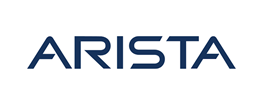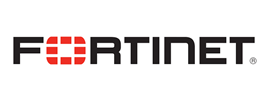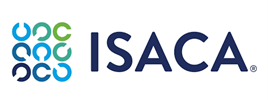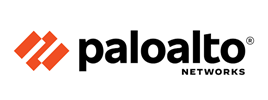- Course overview
- Course details
- Prerequisites
Course overview
About this course
CompTIA Cybersecurity Analyst (CySA+) is an IT workforce certification that applies behavioral analytics to networks and devices to prevent, detect and combat cybersecurity threats through continuous security monitoring.
Audience profile
- IT security analysts
- Vulnerability analysts
- Threat intelligence analysts.
At course completion
You will be able to understand -
- Threat Management
- Vulnerability Management
- Cyber Incident Response
- Security Architecture and Tool Sets
Course details
Module 1: Threat Management
Given a scenario, apply environmental reconnaissance techniques using appropriate tools and processes-
Procedures/common tasks:
- Topology discovery
- OS fingerprinting
- Service discovery
- Packet capture
- Log review
- Router/firewall ACLs review
- Email harvesting
- Social media profiling
- Social engineering
- DNS harvesting
- Phishing
Variables:
- Wireless vs. wired
- Virtual vs. physical
- Internal vs. external
- On-premises vs. cloud
Tools:
- NMAP
- Host scanning
- Network mapping
- NETSTAT
- Packet analyzer
- IDS/IPS
- HIDS/NIDS
- Firewall rule-based and logs
- Syslog
- Vulnerability scanner
Given a scenario, analyze the results of a network reconnaissance-
Point-in-time data analysis:
- Packet analysis
- Protocol analysis
- Traffic analysis
- Netflow analysis
- Wireless analysis
Data correlation and analytics:
- Anomaly analysis
- Trend analysis
- Availability analysis
- Heuristic analysis
- Behavioral analysis
- Data output:
- Firewall logs
- Packet captures
- NMAP scan results
- Event logs
- Syslogs
- IDS report
Tools:
- SIEM
- Packet analyzer
- IDS
- Resource monitoring tool
- Netflow analyzer
Given a network-based threat, implement or recommend the appropriate response and countermeasure-
Network segmentation:
- System isolation
- Jump box
- Honeypot
- Endpoint security
- Group policies
ACLs:
- Sinkhole
Hardening:
- Mandatory Access Control (MAC)
- Compensating controls
- Blocking unused ports/services
- Patching
Network Access Control (NAC):
- Time-based
- Rule-based
- Role-based
- Location-based
Explain the purpose of practices used to secure a corporate environment-
Penetration testing:
- Rules of engagement
Reverse engineering:
- Isolation/sandboxing
- Hardware
- Software/malware
Training and exercises:
- Red team
- Blue team
- White team
Risk evaluation:
- Technical control review
- Operational control review
- Technical impact and likelihood
Module 2: Vulnerability Management
Given a scenario, implement an information security vulnerability management process-
Identification of requirements:
- Regulatory environments
- Corporate policy
- Data classification
- Asset inventory
Establish scanning frequency:
- Risk appetite
- Regulatory requirements
- Technical constraints
- Workflow
Configure tools to perform scans according to specification:
- Determine scanning criteria
- Tool updates/plug-ins
- Permissions and access
- Execute scanning
Generate reports:
- Automated vs. manual distribution
Remediation:
- Prioritizing
- Communication/change control
- Sandboxing/testing
- Inhibitors to remediation
- Ongoing scanning and continuous monitoring
Given a scenario, analyze the output resulting from a vulnerability scan-
Analyze reports from a vulnerability scan:
- Review and interpret scan results
- Validate results and correlate other data points
- Compare to best practices or compliance
- Reconcile results
- Review related logs and/or other data sources
- Determine trends
- Compare and contrast common vulnerabilities found in the following targets within an organization
- Servers
- Endpoints
- Network infrastructure
- Network appliances
Virtual infrastructure:
- Virtual hosts
- Virtual networks
- Management interface
- Mobile devices
- Interconnected networks
- Virtual private networks (VPNs)
- Industrial Control Systems (ICSs)
- SCADA devices
Module 3: Cyber Incident Response
Given a scenario, distinguish threat data or behavior to determine the impact of an incident-
Threat classification:
- Known threats vs. unknown threats
- Zero day
- Advanced persistent threat
Factors contributing to incident severity and prioritization:
- Scope of impact
- Types of data
Given a scenario, prepare a toolkit and use appropriate forensics tools during an investigation-
Forensics kit:
- Digital forensics workstation
- Write blockers
- Cables
- Drive adapters
- Wiped removable media
- Cameras
- Crime tape
- Tamper-proof seals
- Documentation/forms
Forensic investigation suite:
- Imaging utilities
- Analysis utilities
- Chain of custody
- Hashing utilities
- OS and process analysis
- Mobile device forensics
- Password crackers
- Cryptography tools
- Log viewers
- Explain the importance of communication during the incident response process
Stakeholders:
- HR
- Legal
- Marketing
- Management
Purpose of communication processes:
- Limit communication to trusted parties
- Disclosure based on regulatory/legislative requirements
- Prevent inadvertent release of information
- Secure method of communication
Role-based responsibilities:
- Technical
- Management
- Law enforcement
- Retain incident response provider
Given a scenario, analyze common symptoms to select the best course of action to support incident response-
Common network-related symptoms:
- Bandwidth consumption
- Beaconing
- Irregular peer-to-peer communication
- Rogue devices on the network
- Scan sweeps
- Unusual traffic spikes
Common host-related symptoms:
- Processor consumption
- Memory consumption
- Drive capacity consumption
- Unauthorized software
- Malicious processes
- Unauthorized changes
- Unauthorized privileges
- Data exfiltration
Common application-related symptoms:
- Anomalous activity
- Introduction of new accounts
- Unexpected output
- Unexpected outbound communication
- Service interruption
- Memory overflows
- Summarize the incident recovery and post-incident response process
Containment techniques:
- Segmentation
- Isolation
- Removal
- Reverse engineering
Eradication techniques:
- Sanitization
- Reconstruction/reimage
- Secure disposal
Validation:
- Patching
- Permissions
- Scanning
- Verify logging/communication to security monitoring
Corrective actions:
- Lessons learned report
- Change control process
- Update incident response plan
- Incident summary report
Module 4: Security Architecture and Tool Sets
Explain the relationship between frameworks, common policies, controls, and procedures
Regulatory compliance-
Frameworks:
- NIST
- ISO
- COBIT
- SABSA
- TOGAF
- ITIL
Policies:
- Password policy
- Acceptable use policy
- Data ownership policy
- Data retention policy
- Account management policy
- Data classification policy
Controls:
- Control selection based on criteria
- Organizationally defined parameters
- Physical controls
- Logical controls
- Administrative controls
Procedures:
- Continuous monitoring
- Evidence production
- Patching
- Compensating control development
- Control testing procedures
- Manage exceptions
- Remediation plans
Verification's and quality control:
- Audits
- Evaluations
- Assessments
- Maturity model
- Certification
Given a scenario, use data to recommend remediation of security issues related to identity and access management-
Security issues associated with context-based authentication:
- Time
- Location
- Frequency
- Behavioral
Security issues associated with identities:
- Personnel
- Endpoints
- Servers
- Services
- Roles
- Applications
Security issues associated with identity repositories:
- Directory services
- TACACS+
- RADIUS
Security issues associated with federation and single sign-on:
- Manual vs. automatic provisioning/deprovisioning
- Self-service password reset
Exploits:
- Impersonation
- Man-in-the-middle
- Session hijack
- Cross-site scripting
- Privilege escalation
- Rootkit
Given ascenario, review security architecture and make recommendations to implement compensating controls
Security data analytics:
- Data aggregation and correlation
- Trend analysis
- Historical analysis
Manual review:
- Firewall log
- Syslogs
- Authentication logs
- Event logs
Defense in depth:
- Personnel
- Processes
- Technologies
- Other security concepts
Given a scenario, use application security best practices while participating in the Software Development Life Cycle (SDLC)-
Best practices during software development:
- Security requirements definition
- Security testing phases
- Manual peer reviews
- User acceptance testing
- Stress test application
- Security regression testing
- Input validation
Secure coding best practices:
- OWASP
- SANS
- Center for Internet Security
- Compare and contrast the general purpose and reasons for using various cybersecurity tools and technologies
Preventative:
- IPS
- HIPS
- Firewall
- Antivirus
- Anti-malware
- EMET
- Web proxy
- Web Application Firewall (WAF)
Collective:
- SIEM
- Network scanning
- Vulnerability scanning
- Packet capture
- Command line/IP utilities
- IDS/HIDS
Analytical:
- Vulnerability scanning
- Monitoring tools
- Interception proxy
Exploit:
- Interception proxy
- Exploit framework
- Fuzzers
Forensics:
- Forensic suites
- Hashing
- Password cracking
- Imaging
Prerequisites
While there is no required prerequisite, the CompTIA CySA+ certification is intended to follow CompTIA Security+ or equivalent experience. It is recommended for CompTIA CySA+ certification candidates to have the following:
- 3-4 years of hands-on information security or related experience
- Network+, Security+, or equivalent knowledge
Enquiry
Course : CompTIA CySA+
Enquiry
request for : CompTIA CySA+





















